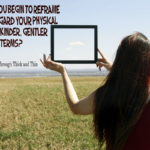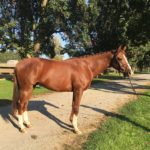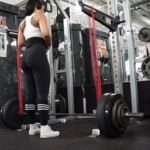Safe Habits
Creating safe habits means learning what you need to do to be safe on the ground and in the saddle, and then doing those things the same way every time you work with your horse until they?re as automatic as the safety habits you use when driving a car.
Teach your horse to respect your space. This isn?t something you teach once and forget; like holding the line when raising a teenager, you must ?patrol this fence? regularly.
Insist on two eyes. This is akin to the personal space thing, but relates more to when you have the horse on a lead or longe line and he’s either not cooperating or completely ignoring you. As horse trainer Clinton Anderson often says, ?A horse cannot kick you or run away from you if he’s got both eyes on you.? So bump on that lead rope to keep both eyes on you at all times.
Pay attention to where you’re standing. Don?t walk right up behind a horse (even one who knows and loves you) without announcing yourself. Horses have a blind spot back there and sometimes?not always?they?ll kick first and ask what they hit later. Stand at a 45-degree angle to your horse’s front shoulder. There you’re out of kicking range, you can’t be run over or clobbered by a pawing front foot, and you can easily get out of the way if the horse starts to come toward you.
Tack and untack the same way every time. The routine ensures that every snap is snapped; every buckle is buckled; and there aren?t any burrs, bumps, or wrinkles waiting in hiding for you to clamber aboard so they can give your horse a surprise pinch.
Tighten your girth/cinch three times. The first time you tighten the cinch, get it just barely snug. Walk your horse or do a little groundwork (five minutes or so), and snug it up again. Then, just before you get on, tighten the cinch the rest of the way.
Mess up your hair, not your head?wear a helmet. As my riding friend Margie once put it, ?It doesn’t take much of a bump on the head to ruin the rest of your life.? The good news is helmets are getting better, even a little more stylish. The even better news is that, at this point in your life, you’re probably less concerned about what other people think. Putting up with a little bit of helmet head means that if you do happen to take a tumble off your horse and slam your head on a rock, you will most likely be able to ride again—–and enjoy the rest of your life in a non-vegetative state.
Install an emergency handbrake; practice the one-rein stop. A true one-rein stop, the kind that gives you a real emergency brake, has to be taught to your horse and practiced a lot to be effective. It is more than simply hauling your horse’s head around to one side. It should be practiced at each gait, every time you ride, so when you have a problem, it is your automatic response to do it, and your horse’s automatic response to obey it.
Get control of nervous feet by teaching your horse to bend in a circle. This is another deceptively simple exercise that can be a lifesaver when you need to get control of a horse that is nervous or panicked. Bending your horse this way and that can take his attention away from something he finds scary and put it on you.
Teach your horse to disengage his hindquarters. Every move your horse makes requires power from his hindquarters. So when you feel things starting to head in a dangerous direction, the very best thing you can do is to take away that power. Apply heel pressure right behind the girth or cinch until your horse’s back leg on that side crosses in front of the opposite hind leg.
Bail out safely. Learn and practice the emergency dismount. Search emergency dismount at HorseandRider.com for a step-by-step tutorial.
Protective Gear Worth Considering
Besides the good ol? helmet, which I mentioned already as being No.1 important when staying safe on horseback, here are a few other riding accoutrements that can help keep you safe (and make you feel safer) while in the saddle.
Boots. Choose a pair with a one-inch heel to prevent your foot sliding through the stirrup and getting caught.
Safety stirrups. Use these safety cages on your stirrups to prevent a foot from getting caught in the stirrup in the case of a fall.
Gloves. You?ll have better grip on the reins and can protect your hands from rope or rein burns and blisters.
Protective vest. Commonly used by eventers, several models are now being marketed for recreational use.
This article is adapted from The Smart Woman?s Guide to Midlife Horses: Finding the Meaning, Magic and Mastery in the Second Half of Life, by Melinda Folse, with introduction by Clinton Anderson. Published by Trafalgar Square Books, the 322-page paperback is a guide that covers practical as well as psychological issues common to horsewomen ?of a certain age,? to use the author?s term. Find the book at HorseBooksEtc.com.







